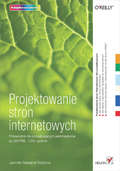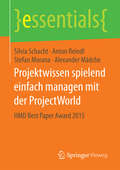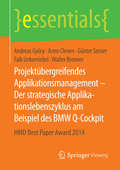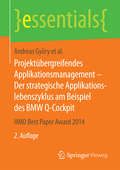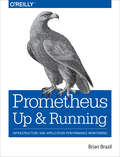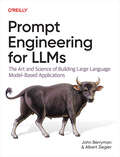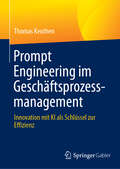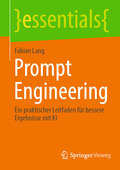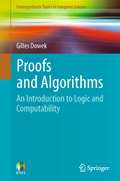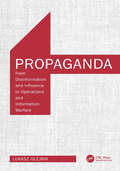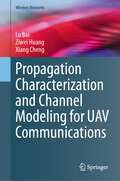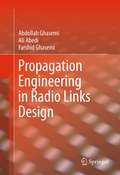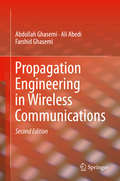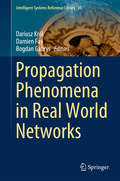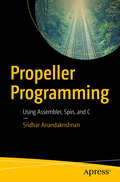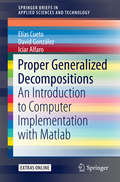- Table View
- List View
Projektowanie stron internetowych. Przewodnik dla pocz?tkuj?cych webmasterów po (X)HTML, CSS i grafice
by Jennifer Niederst RobbinsJak zacz?? pisa? strony internetowe?Jak wybra? odpowiednie narz?dzia do tworzenia witryn?Jak budowa? arkusze stylów i optymalizowa? ?ród?o strony HTML?Od czego mam zacz??? Czy ja si? do tego nadaj?? Nie mam na to czasu...Wielu z nas w?a?nie z takim nastawianiem zabiera si? do pisania swojej pierwszej strony internetowej. Takie i podobne w?tpliwo?ci rozwiewa w?a?nie ta ksi??ka, przeznaczona dla osób niemaj?cych ?adnej wiedzy na temat tworzenia stron internetowych, a które chcia?yby tak? stron? wykreowa?.Czytaj?c j? i pracuj?c nad wieloma przyk?adami, nauczysz si?, jak opracowa? swoj? pierwsz? stron? internetow? i stopniowo odkryjesz w sobie pasj? webmastera!Jennifer Niederst Robbina, bazuj?c na swoim kilkunastoletnim do?wiadczeniu w dziedzinie tworzenia stron internetowych, udowadnia, ?e pisa? strony mo?e ka?dy, nale?y mu tylko wskaza? drog?.Ksi??ka "Projektowanie stron internetowych" jest trzeci? edycj? przewodnika dla pocz?tkuj?cych, lecz napisana zosta?a ca?kowicie od pocz?tku, z uwzgl?dnieniem najnowszych technologii i trendów w tej dziedzinie.Dodatkowym atutem ksi??ki jest przejrzysto?? i ?atwo przyswajalny j?zyk oraz liczne przyk?ady i ?wiczenia, które pozwalaj? lepiej zrozumie? i przyswoi? materia?. Struktura i znaczniki HTMLElementy struktury (X)HTML Tabele, obrazki, odno?niki, animacje i inne elementy stronFormatowanie tekstu Formularze i pola edycjiP?ywanie oraz pozycjonowanie elementów stronArkusze stylów CSSUk?ad strony oparty na arkuszach stylów CSS Techniki CSSGrafika stron internetowych i jej optymalizacjaUmieszczanie stron w InterneciePoznaj techniki tworzenia, napisz i umie?? w?asn? stron? internetow? w sieci!
Projektowanie stron internetowych. Przewodnik dla pocz?tkuj?cych webmasterów po HTML5, CSS3 i grafice. Wydanie IV
by Jennifer Niederst RobbinsTy te? mo?esz mie? swoj? stron? WWW!Marzy Ci si? w?asna strona internetowa lub profesjonalna witryna dla Twojej firmy? Je?eli brak Ci odpowiednich umiej?tno?ci, to zadanie mo?e by? poza Twoim zasi?giem. Ale do czasu! Ta ksi??ka zawiera dawk? wiedzy, która nawet kompletnemu laikowi pozwoli zaprojektowa? i zbudowa? witryn? WWW. Dzi?ki licznym przyk?adom przebrniesz przez kolejne etapy tworzenia strony internetowej oraz odkryjesz w sobie pasj? webmastera!Kolejne wydanie tej cenionej ksi??ki zosta?o gruntownie przeredagowane i uzupe?nione o nowe informacje tak, aby prezentowa?o obecnie wykorzystywane narz?dzia i panuj?ce trendy w projektowaniu stron internetowych. W trakcie lektury poznasz sk?adni? j?zyka HTML, wykorzystywane znaczniki oraz nowo?ci zawarte w HTML5. Ponadto zaznajomisz si? z kaskadowymi arkuszami stylów (CSS) oraz przekonasz si?, jaki potencja? kryje j?zyk JavaScript. Nauczysz si? tak?e przygotowywa? odpowiedni? grafik? na potrzeby strony WWW. Ksi??ka ta jest doskona?ym przewodnikiem wprowadzaj?cym w ?wiat projektowania!Dowiedz si?:jak wykorzysta? arkusze stylów CSSdlaczego nale?y odpowiednio przygotowa? grafik? na stron? WWWdo czego wykorzysta? j?zyk JavaScriptjak zbudowa? pierwsz? stron? WWWPrzewodnik dla pocz?tkuj?cych projektantów WWW!
Projektwissen spielend einfach managen mit der ProjectWorld: HMD Best Paper Award 2015 (essentials)
by Silvia Schacht Anton Reindl Stefan Morana Alexander MädcheDie Autoren zeigen einen neuen Weg auf, gamifizierte Wissensmanagementsysteme mit der Anwendung spielerischer Elemente zu gestalten, und beschreiben die Anforderungserhebung, die Gestaltung und Evaluation des Systems. Hierbei gehen sie auf die theoretischen Grundlagen sowie die Umsetzung und Nutzung in einem Unternehmen ein. Mithilfe von Gamification-Mechanismen sollen Projektteams dazu motiviert werden, ihr Wissen und ihre Erfahrungen zu dokumentieren und in anderen Projekten wiederzuverwenden. Damit erh#65533;lt der Leser einen umfassenden Einblick in die Theorie und Praxis des modernen Wissensmanagements in Projekten.
Projekty elektroniczne na iPhone i iPad. Niekonwencjonalne gad?ety z technologi? Arduino i techBASIC
by Mike WesterfieldPodstawowe funkcje telefonu, czyli dzwonienie i wysy?anie SMS-ów, nikomu ju? dzi? nie wystarczaj?. Wspó?czesne smartfony wykorzystywane s? na mnóstwo innych sposobów. Gry, przegl?danie ulubionych stron w Internecie, aktywny udzia? w ?yciu portali spo?eczno?ciowych — to tylko niektóre z nich.Przy odrobinie umiej?tno?ci mo?esz u?y? Twojego telefonu tak?e do niekonwencjonalnych dzia?a?: na przyk?ad jako wykrywacza metali, barometru lub ?yroskopu. To urz?dzenia, które mo?esz zbudowa? na podstawie Twojego iPada lub iPhone’a oraz kilku niedrogich urz?dze? dodatkowych. Dzi?ki tej ksi??ce jest to naprawd? proste! W trakcie lektury poznasz j?zyk techBasic, który pomo?e Ci zbudowa? dzia?aj?cy higrometr oraz przy?pieszeniomierz. Ponadto zdob?dziesz wiedz? na temat technologii Bluetooth Low Energy oraz nauczysz si? sterowa? zdalnie samochodem za pomoc? urz?dzenia typu BLE i platformy Arduino. Ksi??ka ta jest doskona?? lektur? dla wszystkich pasjonatów elektroniki, którzy chcieliby maksymalnie wykorzysta? potencja? swoich smartfonów i tabletów. Zaskocz swoich znajomych niesamowitym zastosowaniem telefonu!Dzi?ki tej ksi??ce:
Projektübergreifendes Applikationsmanagement - Der strategische Applikationslebenszyklus am Beispiel des BMW Q-Cockpit: HMD Best Paper Award 2014 (essentials)
by Falk Uebernickel Walter Brenner Andreas Györy Anne Cleven Günter SeeserIn diesem essential werden die übergeordneten Zielsetzungen der Applikationsentwicklungund einführung auf vier Evolutionsphasen verteilt, um unterschiedlichenAnforderungen gerecht zu werden. Durch den daraus resultierenden strategischenApplikationslebenszyklus (SALZ) können innovative Neuentwicklungen in frühenPhasen von technischen und architekturbezogenen Vorgaben befreit und agilentwickelt werden, während für operative Kernsysteme weiterhin ein ausführlichesÄnderungsmanagement betrieben wird. Damit bietet der SALZ auch die Grundlage,um in Unternehmen IT-Entwicklungsprojekte adaptiv mit unterschiedlichenGeschwindigkeiten zu realisieren. Alle Erkenntnisse werden am erfolgreichen Praxisbeispiel desQ-Cockpit-Projekts demonstriert.
Projektübergreifendes Applikationsmanagement - Der strategische Applikationslebenszyklus am Beispiel des BMW Q-Cockpit: HMD Best Paper Award 2014 (essentials)
by Falk Uebernickel Walter Brenner Andreas Györy Anne Cleven Günter SeeserIn diesem essential werden die übergeordneten Zielsetzungen der Applikationsentwicklung und einführung auf vier Evolutionsphasen verteilt, um unterschiedlichen Anforderungen gerecht zu werden. Durch den daraus resultierenden strategischen Applikationslebenszyklus (SALZ) können innovative Neuentwicklungen in frühen Phasen von technischen und architekturbezogenen Vorgaben befreit und agil entwickelt werden, während für operative Kernsysteme weiterhin ein ausführliches Änderungsmanagement betrieben wird. Damit bietet der SALZ auch die Grundlage, um in Unternehmen IT-Entwicklungsprojekte adaptiv mit unterschiedlichen Geschwindigkeiten zu realisieren. Alle Erkenntnisse werden am erfolgreichen Praxisbeispiel des Q-Cockpit-Projekts demonstriert.
Prolog: The Next 50 Years (Lecture Notes in Computer Science #13900)
by Robert Kowalski Thomas Eiter Francesca Rossi Veronica Dahl David S. Warren Manuel V. HermenegildoThis volume was motivated by the Year of Prolog initiative, launched to celebrate the 50th anniversary of the emergence of Prolog through the work of Alain Colmerauer’s team in Marseille. The volume editors, authors, and scientific advisors and reviewers have been the leading researchers and programmers in this field over decades, and the book represents an excellent overview of the field, its successes, and its future.After a first chapter that gently introduces the Prolog programming language using examples, the next 7 papers discuss general views of the language, possible extensions for the future, and how Prolog can generally be used to solve problems; the next 5 papers explore ideas and experiences of teaching Prolog programming and then 2 papers discuss technology that has been developed for help in that teaching; the next 3 papers describe new languages based on Prolog which show future directions for logic programming; the next 5 chapters explain the applications that were the finalists for the 2022 Alain Colmerauer Prize; and the final 8 papers describe applications developed using the Prolog language, demonstrating the language’s range.
Prometheus: Infrastructure and Application Performance Monitoring
by Brian BrazilGet up to speed with Prometheus, the metrics-based monitoring system used by tens of thousands of organizations in production. This practical guide provides application developers, sysadmins, and DevOps practitioners with a hands-on introduction to the most important aspects of Prometheus, including infrastructure and application monitoring, dashboarding and alerting, direct code instrumentation, and metric collection from third-party systems with exporters. <P><P>This open source system has gained popularity over the past few years for good reason. With its simple yet powerful data model and query language, Prometheus does one thing, and it does it well. Author and Prometheus developer Brian Brazil guides you through Prometheus setup, the Node exporter, and the Alertmanager, then demonstrates how to use them for application and infrastructure monitoring. <P><P>Know where and how much to apply instrumentation to your application code <br>Identify metrics with labels using unique key-value pairs <br>Get an introduction to Grafana, a popular tool for building dashboards <br>Learn how to use the Node Exporter to monitor your infrastructure <br>Use service discovery to provide different views of your machines and services <br>Use Prometheus with Kubernetes and examine exporters you can use with containers <br>Convert data from other monitoring systems into the Prometheus format
Prometheus: Infrastructure and Application Performance Monitoring
by Brian Brazil Julien PivottoGet up to speed with Prometheus, the metrics-based monitoring system used in production by tens of thousands of organizations. This updated second edition provides site reliability engineers, Kubernetes administrators, and software developers with a hands-on introduction to the most important aspects of Prometheus, including dashboarding and alerting, direct code instrumentation, and metric collection from third-party systems with exporters.Prometheus server maintainer Julien Pivotto and core developer Brian Brazil demonstrate how you can use Prometheus for application and infrastructure monitoring. This book guides you through Prometheus setup, the Node Exporter, and the Alertmanager, and then shows you how to use these tools for application and infrastructure monitoring. You'll understand why this open source system has continued to gain popularity in recent years.You will:Know where and how much instrumentation to apply to your application codeMonitor your infrastructure with Node Exporter and use new collectors for network system pressure metricsGet an introduction to Grafana, a popular tool for building dashboardsUse service discovery and the new HTTP SD monitoring system to provide different views of your machines and servicesUse Prometheus with Kubernetes and examine exporters you can use with containersDiscover Prom's new improvements and features, including trigonometry functionsLearn how Prometheus supports important security features including TLS and basic authentication
Prompt Engineering for Generative AI
by Mike Taylor James PhoenixLarge language models (LLMs) and diffusion models such as ChatGPT and Stable Diffusion have unprecedented potential. Because they have been trained on all the public text and images on the internet, they can make useful contributions to a wide variety of tasks. And with the barrier to entry greatly reduced today, practically any developer can harness LLMs and diffusion models to tackle problems previously unsuitable for automation.With this book, you'll gain a solid foundation in generative AI, including how to apply these models in practice. When first integrating LLMs and diffusion models into their workflows, most developers struggle to coax reliable enough results from them to use in automated systems. Authors James Phoenix and Mike Taylor show you how a set of principles called prompt engineering can enable you to work effectively with AI.Learn how to empower AI to work for you. This book explains:The structure of the interaction chain of your program's AI model and the fine-grained steps in betweenHow AI model requests arise from transforming the application problem into a document completion problem in the model training domainThe influence of LLM and diffusion model architecture—and how to best interact with itHow these principles apply in practice in the domains of natural language processing, text and image generation, and code
Prompt Engineering for LLMs: The Art and Science of Building Large Language Model–Based Applications
by John Berryman Albert ZieglerLarge language models (LLMs) are revolutionizing the world, promising to automate tasks and solve complex problems. A new generation of software applications are using these models as building blocks to unlock new potential in almost every domain, but reliably accessing these capabilities requires new skills. This book will teach you the art and science of prompt engineering-the key to unlocking the true potential of LLMs. Industry experts John Berryman and Albert Ziegler share how to communicate effectively with AI, transforming your ideas into a language model-friendly format. By learning both the philosophical foundation and practical techniques, you'll be equipped with the knowledge and confidence to build the next generation of LLM-powered applications.Understand LLM architecture and learn how to best interact with itDesign a complete prompt-crafting strategy for an applicationGather, triage, and present context elements to make an efficient promptMaster specific prompt-crafting techniques like few-shot learning, chain-of-thought prompting, and RAG
Prompt Engineering im Geschäftsprozessmanagement: Innovation mit KI als Schlüssel zur Effizienz
by Thomas KeuthenBei der Optimierung von Geschäftsprozessen spielen Large Language Models (LLMs) wie ChatGPT eine zentrale Rolle. Ziel des Buches ist, eine Brücke zwischen klassischen Prozessmanagement-Methoden und den neuesten Entwicklungen im Bereich Künstlicher Intelligenz zu schlagen. Dabei werden nicht nur theoretische Grundlagen vermittelt, sondern auch praxisnahe Anwendungsfälle vorgestellt. Besonderes Augenmerk liegt auf Strategien zur effizienten Nutzung von LLMs, der Kostenkontrolle und der Vermeidung von Anbieterabhängigkeiten. Von der Prozessidentifikation über die Modellierung bis hin zur kontinuierlichen Optimierung – LLMs eröffnen neue Möglichkeiten in der Dokumentenanalyse, Prozessgestaltung und -überwachung, im Kundenservice oder in ERP-Systemen. Fallstudien und klare Methoden helfen dabei, die richtige KI-Technologie auszuwählen und effizient in bestehende Systeme zu integrieren. Das Buch zeigt mit konkreten Beispielen anschaulich, wie Unternehmen LLMs erfolgreich einsetzen können und welche Herausforderungen bei der Implementierung bestehen. Es liefert verständliche und anwendungsorientierte Inhalte für alle, die Geschäftsprozesse zukunftsfähig gestalten möchten.
Prompt Engineering: Ein praktischer Leitfaden für bessere Ergebnisse mit KI (essentials)
by Fabian LangProf. Dr. Fabian Lang ist Professor für Betriebswirtschaftslehre an der Hochschule Hannover und forscht zu digitaler Transformation, Analytics und Künstlicher Intelligenz sowie unternehmerischer Entscheidungsunterstützung. Mit langjähriger Erfahrung in Wissenschaft und Praxis vermittelt er komplexe Technologien verständlich und praxisorientiert.
Prompt Engineering: Empowering Communication
by Anand Nayyar Ajantha Devi VairamaniPrompt engineering engages as a transformative approach to enhancing interaction, creativity, and innovation. From business and healthcare to education, law, and beyond, prompt engineering is a versatile toolkit for navigating complex challenges and driving meaningful change.This book delves into the intricacies of prompt engineering, providing insights, techniques, and practical examples for leveraging prompts effectively. It explores the evolution of prompt engineering, from its early antecedents to its contemporary applications with advanced language models like ChatGPT. Readers will discover how prompts can enhance communication, foster creativity, facilitate problem-solving, and empower professionals across diverse domains.This book is your gateway to unlocking the full potential of prompt engineering. Join the journey of discovery and innovation as the book harnesses the power of prompts to shape a brighter future.
Prompting Causal Events (SpringerBriefs in Intelligent Systems)
by Jordi VallverdúPrompting marks a paradigmatic shift in how we engage with artificial intelligence—transforming static interfaces into dynamic conversations, reshaping the relationship between user intent, system behavior, and knowledge production. This book invites readers into that frontier, tracing the contours of prompting as a methodology for causal understanding across diverse academic and applied domains. At its heart, prompting democratizes computational reasoning. It lowers the threshold of expertise required to interrogate complex systems, analyze data, and simulate outcomes. Where once deep technical skill was necessary to extract insights from models or datasets, prompting enables a new kind of user—one who crafts queries, scenarios, and simulations with natural language, guided by discipline-specific rigor and cognitive intent. This transformation is especially urgent in the realm of causality, a concept as contested as it is essential. Across centuries, philosophers, scientists, statisticians, and legal scholars have debated its meaning, its measurement, and its manifestations. This book does not aim to resolve those disputes; instead, it offers a set of practical strategies to work with them—mobilizing the capabilities of generative AI to support causal reasoning tailored to disciplinary norms and constraints. Generative AI can engage in multimodal causal inference—connecting language with images, charts, simulations, and numerical data. This ability to traverse modes of representation opens new pathways for inquiry, particularly in science, education, and design. Prompting, therefore, is not simply a communication layer. It is a new medium for causal thought. The future of causality may not belong to machines or humans alone. It will belong to those who master the art of asking better questions. The author will guide the readers through the full spectrum of prompting techniques—from role simulation and reasoning chains to creative generation and ethical constraints. Whether you are a researcher, educator, policymaker, or student, this book is designed to enhance your fluency in a language we are all still learning to speak: the language of generative epistemics.
Proof Technology in Mathematics Research and Teaching (Mathematics Education in the Digital Era #14)
by Gila Hanna Michael De Villiers David A. ReidThis book presents chapters exploring the most recent developments in the role of technology in proving. The full range of topics related to this theme are explored, including computer proving, digital collaboration among mathematicians, mathematics teaching in schools and universities, and the use of the internet as a site of proof learning. Proving is sometimes thought to be the aspect of mathematical activity most resistant to the influence of technological change. While computational methods are well known to have a huge importance in applied mathematics, there is a perception that mathematicians seeking to derive new mathematical results are unaffected by the digital era. The reality is quite different. Digital technologies have transformed how mathematicians work together, how proof is taught in schools and universities, and even the nature of proof itself. Checking billions of cases in extremely large but finite sets, impossible a few decades ago, has now become a standard method of proof. Distributed proving, by teams of mathematicians working independently on sections of a problem, has become very much easier as digital communication facilitates the sharing and comparison of results. Proof assistants and dynamic proof environments have influenced the verification or refutation of conjectures, and ultimately how and why proof is taught in schools. And techniques from computer science for checking the validity of programs are being used to verify mathematical proofs. Chapters in this book include not only research reports and case studies, but also theoretical essays, reviews of the state of the art in selected areas, and historical studies. The authors are experts in the field.
Proof of Work: Blockchain Provocations 20112021 (Urbanomic / Art Editions)
by Rhea MyersA beautifully produced anthology of crypto-artist, writer, and hacker Rhea Myers's pioneering blockchain art, along with a selection of her essays, reviews, and fictions.DAO? BTC? NFT? ETH? ART? WTF? HODL as OG crypto-artist, writer, and hacker Rhea Myers searches for faces in cryptographic hashes, follows a day in the life of a young shibe in the year 2032, and patiently explains why all art should be destructively uploaded to the blockchain. Now an acknowledged pioneer whose work has graced the auction room at Sotheby&’s, Myers embarked on her first art projects focusing on blockchain tech in 2011, making her one of the first artists to engage in creative, speculative, and conceptual engagements with "the new internet." Proof of Work brings together annotated presentations of Myers&’s blockchain artworks along with her essays, reviews, and fictions—a sustained critical encounter between the cultures and histories of the artworld and crypto-utopianism, technically accomplished but always generously demystifying and often mischievous. Her deep understanding of the technical history and debates around blockchain technology is complemented by a broader sense of the crypto movement and the artistic and political sensibilities that accompanied its ascendancy. Remodeling the tropes of conceptual art and net.art to explore what blockchain technology reveals about our concepts of value, culture, and currency, Myers&’s work has become required viewing for anyone interested in the future of art, consensus, law, and collectivity.
Proofs and Algorithms
by Gilles DowekLogic is a branch of philosophy, mathematics and computer science. It studies the required methods to determine whether a statement is true, such as reasoning and computation. Proofs and Algorithms: Introduction to Logic and Computability is an introduction to the fundamental concepts of contemporary logic - those of a proof, a computable function, a model and a set. It presents a series of results, both positive and negative, - Church's undecidability theorem, Gödel's incompleteness theorem, the theorem asserting the semi-decidability of provability - that have profoundly changed our vision of reasoning, computation, and finally truth itself. Designed for undergraduate students, this book presents all that philosophers, mathematicians and computer scientists should know about logic.
Propaganda: From Disinformation and Influence to Operations and Information Warfare
by Lukasz OlejnikThe book is a modern primer on propaganda—aspects like disinformation, trolls, bots, information influence, psychological operations, information operations, and information warfare. Propaganda: From Disinformation and Influence to Operations and Information Warfare offers a contemporary model for thinking about the subject.The first two decades of the 21st century have brought qualitative and quantitative technological and societal changes, and the subject of information influence needs to be re-ordered. Now is the time.The book explains the origins of the meaning and phenomenon of propaganda—where it came from and how it has changed over the centuries. The book also covers modern methods, including artificial intelligence (AI) and advertising technologies. Legal, political, diplomatic, and military considerations ensure that the material is covered in depth.The book is recommended for security and cybersecurity professionals (both technical and non-technical), government officials, politicians, corporate executives, academics, and students of technical and social sciences. Adepts with an interest in the subject will read it with interest.
Propagation Characterization and Channel Modeling for UAV Communications (Wireless Networks)
by Xiang Cheng Ziwei Huang Lu BaiThis book focuses on the propagation characterization and channel modeling of Unmanned Aerial Vehicle (UAV) communications. Currently, there are no books that cover this specific topic. The authors fill in this void by elaborating accurate yet easy-to-use UAV channel models. The authors also present such topics as propagation characteristics of UAV communications, a time stationary regular-shaped geometry-based stochastic model (RS-GBSM) for UAV narrowband channels. It also introduces a time non-stationary RS-GBSM for UAV narrowband channels, a time non-stationary RS-GBSM for UAV wideband channels, a time-space non-stationary irregular-shaped geometry-based stochastic model (IS-GBSM) for UAV wideband channels and more. Finally, this book closes up with some promising directions, hoping to promote future research outcomes in the field of UAV channel modeling. As the UAV technology matures rapidly, UAV communications are shifting from military development to civilian and commercial sectors. The UAV communication is widely considered as a significant and indispensable component of wireless communications. It is well known that an accurate yet easy-to-use UAV channel model is the foundation of designing a proper UAV communication system and evaluating its performance. This book also provides valuable suggestions for the design of UAV communication systems by adequately presenting the UAV propagation characterization and channel modeling. This book is mainly written for researchers and professionals working in wireless communications. Advanced-level students majoring in computer science or electrical engineering may also find the content useful as a secondary textbook.
Propagation Engineering in Radio Links Design
by Farshid Ghasemi Abdollah Ghasemi Ali AbediThis book addresses propagation phenomena in satellite, radar, broadcasting, short range , trans-horizon and several recent modes of communications in radio links. Also, it includes some topics on antennas , radio noises and improvement techniques. The book provides the necessary basic matters, as well as experimental results and calculation procedures for radio link design.
Propagation Engineering in Wireless Communications
by Farshid Ghasemi Abdollah Ghasemi Ali AbediPropagation Engineering in Wireless Communications covers the basic principles needed for understanding of radiowaves propagation for common frequency bands used in radio-communications. This book includes descriptions of new achievements and new developements in propagation models for wireless communication. The book is intended to bridge the gap between the theoretical calculations and approaches to the applied procedures needed for radio links design in a proper manner. The authors intention is to emphasize propagation engineering by giving sufficient fundamental information and then going on to explain the use of basic principles together with technical achievements in this field.
Propagation Phenomena in Real World Networks
by Dariusz Król Damien Fay Bogdan Gabryś"Propagation, which looks at spreading in complex networks, can be seen from many viewpoints; it is undesirable, or desirable, controllable, the mechanisms generating that propagation can be the topic of interest, but in the end all depends on the setting. This book covers leading research on a wide spectrum of propagation phenomenon and the techniques currently used in its modelling, prediction, analysis and control. Fourteen papers range over topics including epidemic models, models for trust inference, coverage strategies for networks, vehicle flow propagation, bio-inspired routing algorithms, P2P botnet attacks and defences, fault propagation in gene-cellular networks, malware propagation for mobile networks, information propagation in crisis situations, financial contagion in interbank networks, and finally how to maximize the spread of influence in social networks. The compendium will be of interest to researchers, those working in social networking, communications and finance and is aimed at providing a base point for further studies on current research. Above all, by bringing together research from such diverse fields, the book seeks to cross-pollinate ideas, and give the reader a glimpse of the breath of current research. "
Propeller Programming: Using Assembler, Spin, And C
by Sridhar AnandakrishnanLearn to program the Propeller in Spin and C and how to map the Propeller Assembler (PASM) language from other high-level languages you might know.The overall task you will pursue in the book is to implement a Delta Compression algorithm: first in Spin, then in PASM, then in C. Along the way, you'll review test driven development, a powerful technique for validating code, and conclude with a chapter on hardware manipulations. The book's main goal is to help you extend the capabilities of the Propeller processor by using the assembler language.What You’ll LearnUse a data compression/decompression application to introduce PASM to the readerIntegrate C and PASM codeReview hardware interactions (setting and reading pins)Who This Book Is ForThose who are familiar with Spin programming for the Parallax Propeller but have an interest in learning Propeller C and Propeller Assembler (PASM) programming. Some knowledge of C or Python is also helpful.
Proper Generalized Decompositions
by Elías Cueto David González Icíar AlfaroThis book is intended to help researchers overcome the entrance barrier to Proper Generalized Decomposition (PGD), by providing a valuable tool to begin the programming task. Detailed Matlab Codes are included for every chapter in the book, in which the theory previously described is translated into practice. Examples include parametric problems, non-linear model order reduction and real-time simulation, among others. Proper Generalized Decomposition (PGD) is a method for numerical simulation in many fields of applied science and engineering. As a generalization of ProperOrthogonal Decomposition or Principal Component Analysis to an arbitrary numberof dimensions, PGD is able to provide the analyst with very accurate solutionsfor problems defined in high dimensional spaces, parametric problems and evenreal-time simulation.
